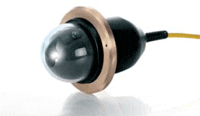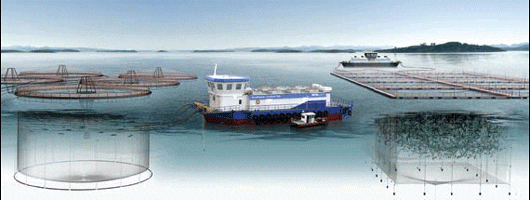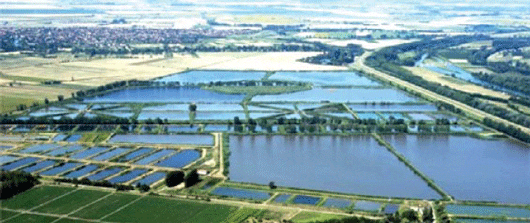Ocean sensor technologies help fish farmers reduce feed costs and feed impacts
Accurate measurements of the water flow rates, oxygen concentration, salinity and temperature at different depths throughout the cage allow computer-assisted feeding machines to deliver the right amount of feed in the right place at the right time.

Feeding cameras are positioned at depth below the feeding areas and point towards the surface. They can be linked up to a monitor or remote video, so that the feeding efficiency can be observed in real time.
Furthermore, a feed detector suspended in the cage will record the uneaten feed that falls to the bottom of the cage. By reducing the uneaten feed, an increase in the food conversion ratio can be achieved.
This is a significant development, compared to the hand-feeding “by eye” carried out on fish farms some years ago. It not only leads to a saving in feed costs for the producer, but it also lowers the environmental impact of uneaten feed on the sea floor area below the production cages.
Shellfish cultivation

Shellfish such as oysters, mussels and clams are filter feeders and take their food directly from the water in which they live. This means that they do not require supplementary food and, if anything, actually improve the quality and clarity of the water. Shellfish farming can only provide the best quality products if practiced in pristine environments with the highest water quality.
Environmental problems can arise on shellfish farms where the animals are held at overly high densities, leading to depletion of food in the water and build-up of faeces below the holding areas. Both effects will harm the outcome for the farmer and hence shellfish farms are generally sited where water exchange is high and the stock is kept at densities that are compatible with the level of water exchange. In many cases, stocking densities on farms are lower than those of clusters of shellfish (e.g. mussels) that occur on natural beds.
Shellfish farms have been thought to disturb wildlife habitats by taking up space on a beach where wading birds feed. It has been shown, however, that wading birds and oyster farms can exist side by side. The fallen oyster or mussel can have a positive impact on a bird’s feeding pattern.
Other potential impacts include the importation of parasites, pests and diseases onto the shellfish farm which would then spread to other areas. The microscopic oyster parasite Bonamia ostrea, for example, gradually spread through Europe with the spread of oyster farming. Oyster farmers have responded by significantly reducing the density at which their shellfish are farmed.
Some people complain of “visual pollution” caused by large numbers of floating barrels or shellfish trestles in otherwise unspoilt areas. Low-profile and dark-coloured floats have recently been developed to minimise the visual impact.

Pond fish farming
Fish pond systems represent the oldest fish farming activity in Europe, at least dating back to medieval times. Ponds were built in areas where water supply was available and the soil was not suitable for agriculture. The wetlands of Central and Eastern Europe are good examples of this. The total European production from pond farming is approximately 475,000 tonnes. About half of this production is cyprinid fish, such as common carp, silver carp and bighead carp. The main producer countries are the Russian Federation, Poland, Czech Republic, Germany, Ukraine and Hungary.
Typical fish ponds are earthen enclosures in which the fish live in a natural-like environment, feeding on the natural food growing in the pond itself from sunlight and nutrients available in the pond water.
In order to reach higher yields, farmers today introduce nutrients into the pond such as organic manure. This is accompanied by stocking of fingerlings and by water being flushed through the pond. Fish pond production, however, remains ‘extensive’ or ‘semi-intensive’ (with supplementary feeding) in most countries, where semi-static freshwater systems play an important role in aquaculture. Chemicals and therapeutics are not usually used in such ponds. Hence the main environmental issue is the use of organic fertilisers, which may cause eutrophication in the surrounding natural waters. The use of organic fertilisers is regulated at national levels.

Extensive fish ponds are usually surrounded by reed belts and natural vegetation, thus providing important habitats for flora and fauna. They play a growing role in rural tourism. Many pond fish farms have been turned into multifunctional fish farms, where various other services are provided for recreation, maintenance of biodiversity and improvement of water management.
In areas where water is scarce, some farm systems recirculate, treat and re-use their water. Such systems are generally self-contained and therefore pose little threat to the environment. Solid waste material produced in such systems is rich in organic compounds and often used as a fertilizer elsewhere. Alternatively, new hydroponic systems have been developed to grow vegetables and other food crops in the nutrient-enriched water. There is much interest in these systems, but their economic viability remains challenging.
December 2008


